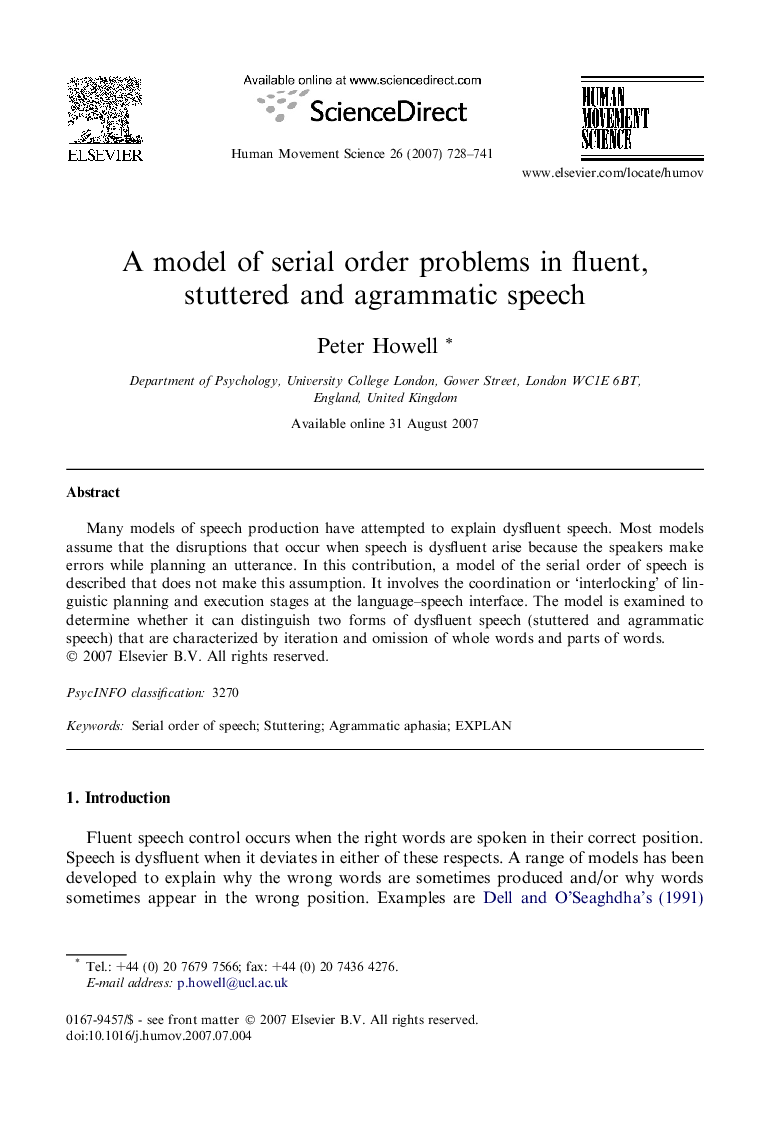| Article ID | Journal | Published Year | Pages | File Type |
|---|---|---|---|---|
| 10459282 | Human Movement Science | 2007 | 14 Pages |
Abstract
Many models of speech production have attempted to explain dysfluent speech. Most models assume that the disruptions that occur when speech is dysfluent arise because the speakers make errors while planning an utterance. In this contribution, a model of the serial order of speech is described that does not make this assumption. It involves the coordination or 'interlocking' of linguistic planning and execution stages at the language-speech interface. The model is examined to determine whether it can distinguish two forms of dysfluent speech (stuttered and agrammatic speech) that are characterized by iteration and omission of whole words and parts of words.
Related Topics
Life Sciences
Neuroscience
Cognitive Neuroscience
Authors
Peter Howell,
